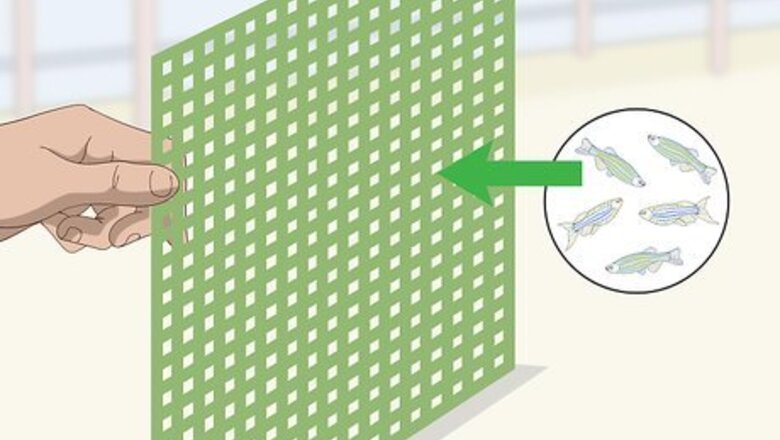
views
X
Expert Source
Craig MortonAquarium Specialist, Aquarium Doctor Inc.
Expert Interview. 21 July 2020.
It's useful when you need to keep fish apart for safety, breeding, or other reasons. Most homemade dividers are made from two materials—plastic canvas or egg crates—that are secured to the tank and anchored at the bottom. Make your own fish tank dividers to save money and customize how you divide your tank.
Working with the Plastic Canvas or Egg Crates
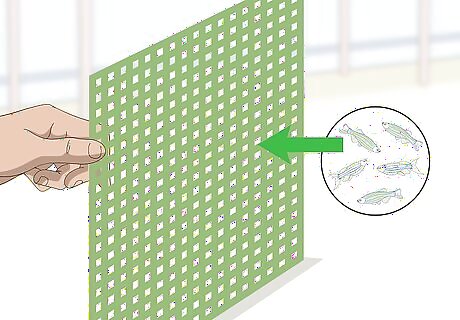
Choose a material based on the size of your fish. Use a material with holes smaller than your smallest fish to prevent them from swimming through the divider. Choose plastic canvas to prevent small fish from swimming through. Use egg crates if it’s okay for smaller fish or babies to swim on both sides of the divider. You can find egg crates at home improvement stores like Lowes and Home Depot.
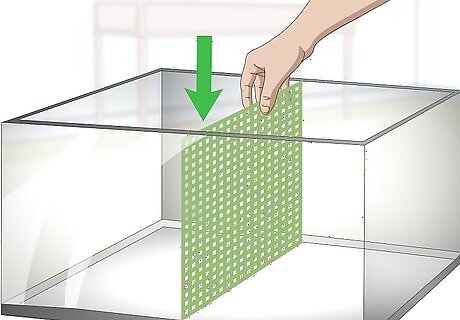
Fit the divider. Measure the height and width of your tank where you want to divide it. Use these measurements to determine how large the canvas or egg crates need to be. Buy the dividing material in the size you need or cut it to size if it is too big. Combine pieces of the material if you can’t buy a size that easily fits into your tank. Ensure the divider is taller than the water level so fish cannot swim over the divider. Combine plastic canvas by attaching pieces together with fishing line. Glue multiple egg crates together with silicone if you need a larger divider.
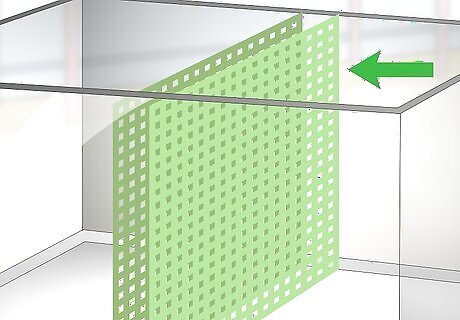
Double the plastic canvas for durability. Make a plastic canvas divider more secure by putting two pieces of material together. Doubling the canvas also makes it harder for fish to see each other through the divider. Use plants or moss in between the doubled material to further prevent fish from seeing each other through the divider. Stick your plants or moss in the middle of two pieces of plastic canvas or two egg crates. The moss will grow outward and make an excellent nesting, play and resting area.
Attaching the Sides to the Tank
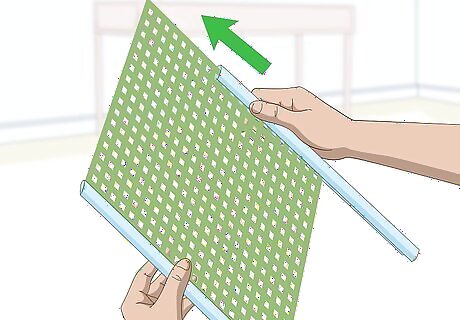
Make a frame for a plastic canvas divider. Use the spines from two report covers to make your frame. Start by pulling the sliding plastic spines off the report covers. Slide one spine on each long side of the mesh or plastic canvas to make the bars of the frame. Cut to size if needed. Consider making the frame sturdier by adding a third spine on the bottom of the canvas. Look for report covers in an office supply store. Use snap frames for poster boards instead of report cover spines for a more sturdy frame. Don’t bother with a frame for egg crates.
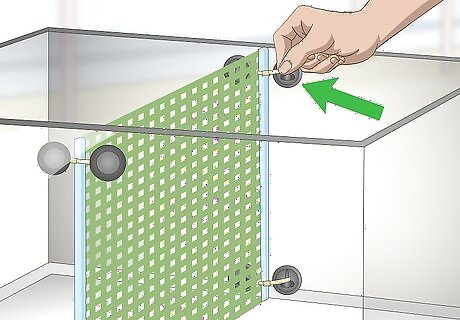
Secure the divider in the tank. Tuck the sides of the frame or the egg crate under the lip of the tank. Aim for a very snug fit. You can further secure the divider with suction cups. Attach suction cups to the frame with fishing line. Use plastic zip ties to attach them to the egg crate. You might need to cut the sides of the frame down for them to fit. Add an extra piece of plastic canvas on the outside of the frame if there is a gap between the suction cups and the sides of the tank. Do this to prevent fish from swimming through the gaps.

Adhere egg crates to the tank with silicone. Glue the thinnest sides of the egg crates to the tank with aquarium-safe pure silicon. Use a marker to draw a line on the outside of the tank to guide where the silicone needs to go. Then add the silicone and slide in the divider. Remove the marker with rubbing alcohol or a similar cleaning agent. Look for this silicone in pet stores, craft shops, online, or in building supply stores. Do this in a dry tank for best results.
Ensuring the Divider is Secure
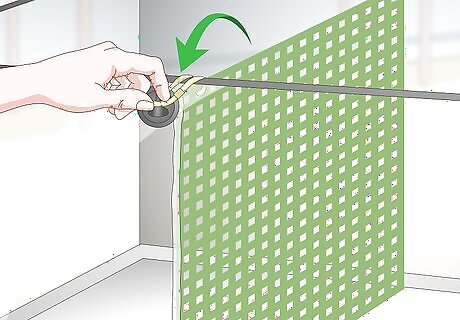
Stabilize the divider on top. If the divider doesn’t fit snugly under the lip of the tank, secure it on top. Use duct tape or tie small weights onto it that overhang on the outside of the tank. Alternatively, attach suction cups to the top of the divider and secure those to the outside top of the tank. You can also use hot glue or silicone to adhere the dividers to the top of the tank.
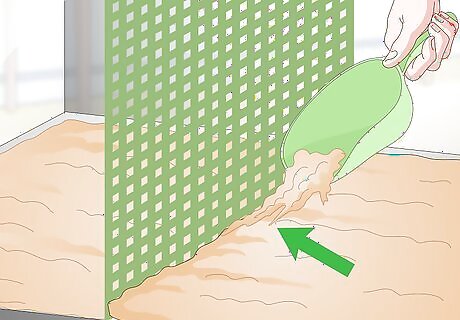
Anchor the divider. Don’t let the divider move on the bottom. Anchor the divider by burying it under the substrate at the bottom of the fish tank. You can also prop it in place by shoring up rocks on either side of the divider.

Use safe materials. Never make a tank divider out of wire, harmful metals, or sharp materials. Thoroughly clean any materials you might be reusing to make the divider. Check with your vet or pet store if you’re unsure about the safety of any items you want to put in your fish tank.




















Comments
0 comment